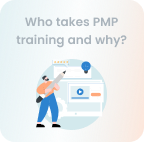







 10 Sep 2024
10 Sep 2024
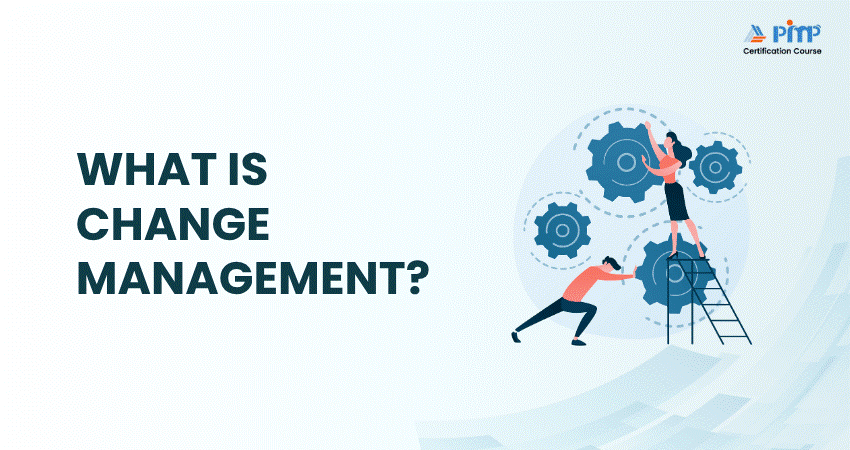


Have you ever felt that you are always late to the trends of your business? Do you want to align with the crew who are leading the first step towards any change? We heard you, and that’s where Change Management comes in!
Change is always an inevitable part of every business. Whether it’s using new technology, shifting team structures, or updating the way things are done, change helps you grow and stay competitive. In this blog, you can learn what Change Management is, why it matters, its types, key steps, and how to manage change effectively. Read on!
Table of Contents
1) What is Change Management?
2) Types of Change Management
3) Key Steps in the Change Management Process
4) How to Lead Change Management Successfully?
5) Benefits of Change Management
6) Effective Change Management Best Practices
7) Conclusion
Change Management is a structured process that helps individuals, teams, and organizations transition to a change with some kind of planning and execution. It includes implementing new strategies, technologies, making big decisions, or adapting to new structures.
It helps make sure changes are handled smoothly so that employees stay on track, the company keeps running, and goals are met. In essence, Change Management is not always about implementing change; it is more about enabling people to succeed through it.
Different situations call for different types of change. Some situations are small and easy to manage, while others are big and require more effort. To manage change more effectively, Change Management can be categorised into different types. Below are some of the most common ones:
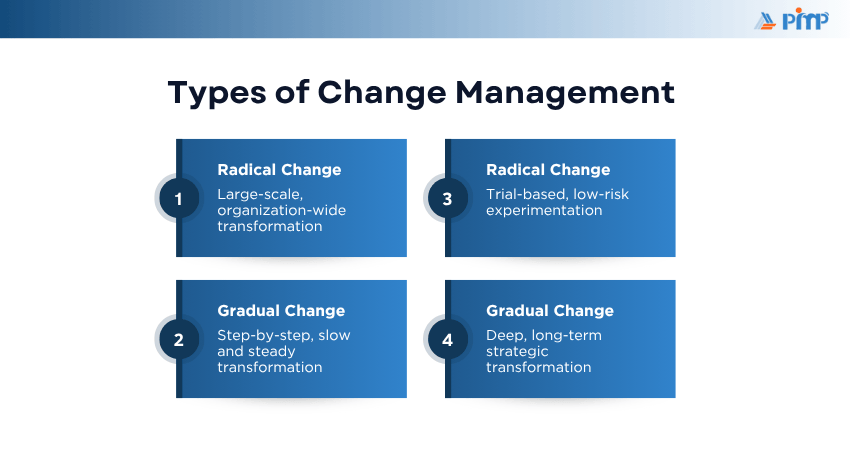
Radical change is a large-scale shift that affects the entire organization. It could be a company merger, a major restructuring of teams, or the introduction of a completely new system or technology.
Since it impacts large areas, it needs strong planning, good communication, and support to help employees understand what is happening and how to adjust.
Example: A university switches all classes to online learning due to a major policy shift.
Gradual change happens slowly over time, allowing you to adjust step by step. This is often easier to manage because it gives your employees time to get used to the new way of doing things.
This kind of change requires some support systems for its adoption, though it is less disruptive. An example would be adding features to existing software or rolling out new policies in a team.
Example: A business gradually adds a live chat option while still keeping phone support during the transition.
Reversible change refers to the process of trying something new with the option to go back if it doesn’t work. This type is common during pilot programs, test phases, or when experimenting with new tools or ideas.
The benefit of reversible change is that it reduces risk. If the new approach is not successful or creates problems, users can easily get back to the old method.
Example: A company tests remote work with one department for three months.
A fundamental shift is a deep, long-term change that affects the core of the business. This could mean changing the mission of your organization, moving to a new business model, or adopting an entirely different way of operation.
These changes take time and often need new skills, training, and changes in mindset. It needs to be carefully planned and explained since it is the foundation of your business.
Example: A print magazine organization moves to a fully digital subscription model.
Integrate projects effectively and lead cross-functional teams with our Program Management Professional (PgMP)® Certification – Join now!
Here are the key steps for implementing a Change Management process for your business or organization:
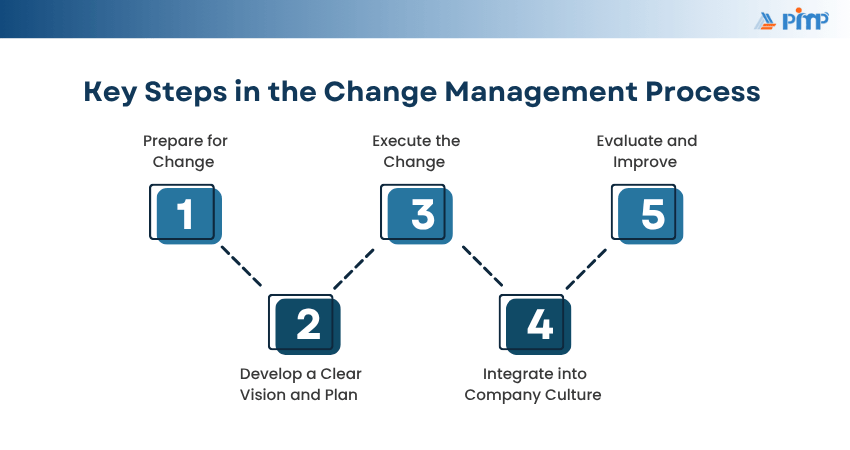
Start by understanding why the change is needed. Then, prepare both logistically and culturally to support a successful transition. You can start the initiatives by:
1) Checking what is working and what needs to change
2) Getting leaders and teams involved as early as possible
3) Making sure everyone understands the primary reasons for change
When you have prepared your organization or business to embrace the change, you can develop a realistic and strategic plan for implementing it. Plan how the change will happen.
1) Set strategic and change objectives, including Key Performance Indicators (KPIs)
2) Create a training or support plan with the required tools and users
3) Assign tasks to each team member with clear roles
In this stage, you will carry out the plan you designed beforehand. This step is often called the implementation process. Clear communication and effective leadership are prominent here.
1) Start rolling out changes in different phases
2) Support teams through the transition with training
3) Maintain steady communication and adequate feedback channels
Change must become part of daily workflows and company culture. This integration will help to stick to change and not fall back to the old way of doing things.
1) Recognize and reward adoption to go with the changes
2) Keep encouraging new behaviors among the employees
3) Align with business policies and procedures
As an organization, you need to review what worked and what didn’t during this transition phase. Post-implementation feedback helps refine and set up future change initiatives.
1) You can analyze the outcomes with your initial objectives
2) Document the lessons learned for future changes
3) Gather employee and customer feedback on how effective the change was
Aim for effective collaboration, strategic planning, and continuous improvement by registering for our PMI Project Management Ready® Certification today!
To lead any Change Management efficiently, managers, leaders, and employees of a business need to be clear, calm, and confident. Here are some tips on how to do it:
1) Set a Clear Goal: Define what the change is and why it is needed for the business
2) Communicate Clearly: Share updates regularly and be open to communication
3) Involve Your Team: Engage more people to gain support and reduce resistance
4) Provide Training: Equip employees with the tools and skills they need to adapt
5) Celebrate Small Wins: Recognize each progress to keep your morale high
6) Listen to Feedback: Encourage questions and respond to concerns to build trust
7) Monitor Progress: Track how the change is being implemented and adjust as needed
When done right, Change Management brings many benefits to the company and its employees. Let's check what those benefits are:
1) Make plans ahead to handle potential problems before they affect work
2) Keeps operations running by leading teams through change in steps
3) Provides support during the transition to ignore feeling lost or overwhelmed
4) Minimizes confusion with clear communication and consistent updates
1) Involves employees early, so they feel part of the change
2) Explains the reason behind the change to build trust and understanding
3) Offers training and resources so employees feel ready to adapt
4) Recognizes feedback and concerns, showing respect towards opinions
1) Clarifies new roles and tasks, which reduce downtime or repeated effort
2) Improves coordination between teams as everyone works toward a shared goal
3) Streamlines processes by removing all the outdated methods
4) Keeps morale high by supporting employees through transitions
1) Boosts confidence by helping teams experience and succeed in change
2) Encourages learning, which helps people open to new tools or ideas
3) Develops problem-solving skills as teams begin to adjust quickly
4) Creates a growth mindset by seeing change as a chance to grow and improve
Implementing change in any organization is complex, but with the right strategies, it becomes manageable and transformative. Below are ten proven Change Management best practices you can try using:
Start by establishing a governance framework that includes a Change Advisory Board (CAB), key stakeholders, executive sponsors, and cross-functional leaders. This team defines roles, makes informed decisions, and ensures accountability throughout the change process.
Change must be built around the people it affects. Therefore, before making any big changes, talk to the stakeholders and employees who will be directly impacted. Ask them what challenges they face and what support they need to understand the real problems.
Decide how to introduce the change based on complexity, risk, user volume, and support capacity. It can be a gradual progression like linear rollout; timed releases to equally sized user groups as geometric waves, and applying change to everyone at the same time as a big bang.
Align your projects with organizational goals and stakeholder expectations with our Certified Associate in Project Management (CAPM) ® Training – Sign up anytime!
Openness to your employees about challenges, progress, and setbacks builds trust and reduces resistance. This helps everyone know what is happening as early as possible. For effective practice, you can use different channels like emails, meetings, or in-app messages.
Identify and empower employees who can influence change within their teams, driving peer-level motivation. This is because some people naturally influence others by sharing useful tips, helping others accept the change, motivating the team, etc.
To boost the employees’ support, you can offer training, self-help resources, and emotional support to help them transition effectively and confidently. Change can be stressful sometimes. That is the reason emotional support is also required.
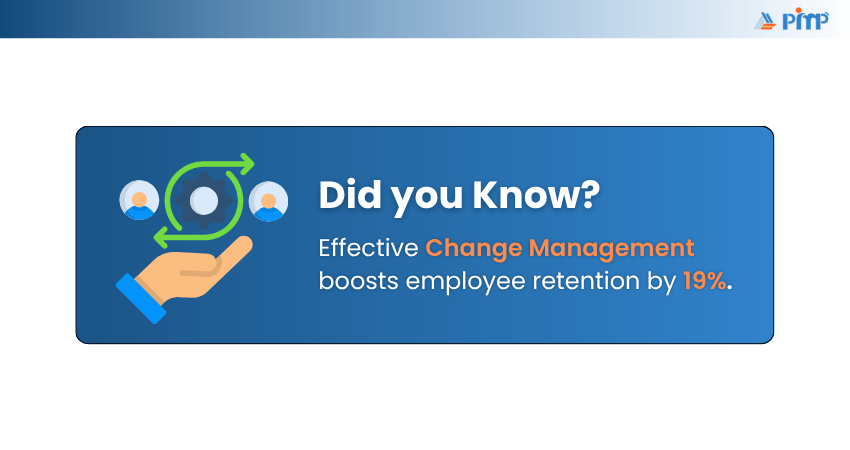
Track your progression, like adoption, performance metrics, and user feedback, from the beginning. For that, you can use KPIs, sentiment surveys, and usage data to be effective and identify issues in the early stages.
Early victories are more powerful. Highlighting results like improved efficiency, faster onboarding, or enhanced customer satisfaction helps reinforce the value of change. Bringing these to everyone's attention even motivates hesitant employees to get on board.
Change thrives in an environment where people feel heard. So, you need to consistently gather feedback through surveys, open forums, and informal conversations. This promotes a culture of inclusion, encourages innovation, and actionable insights to refine your approach.
Encourage a culture that embraces continuous improvement and innovation, reducing resistance to future change. One of its significant strategies is to make change a core capability of your organization. This adds continuous learning to your workflows.
Have you heard the popular saying “Flexibility is the key to stability” anywhere? That totally resonates with the inevitable nature of Change Management. As the world evolves with a lot of changes, you need to keep moving by adapting to relevant changes. So, lead your path to change by never hesitating to take one step away from your comfort zone!
Manage unexpected challenges and make informed decisions with our PMI-RMP® Certification – Register immediately!






© Copyright 2025. All rights reserved. Contact: PMP® TRAINING ACADEMY.


